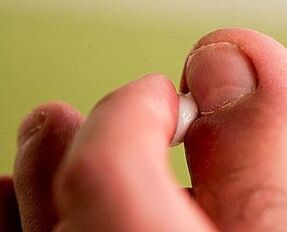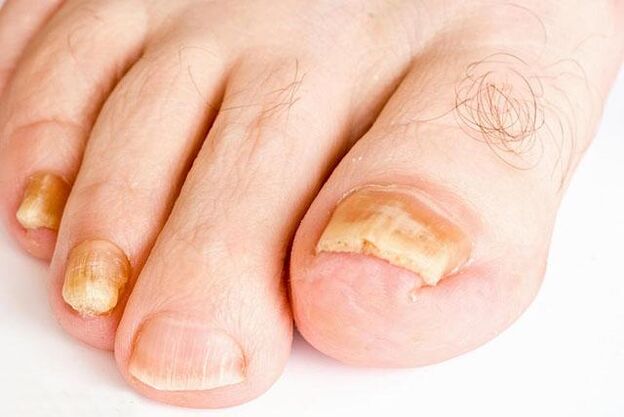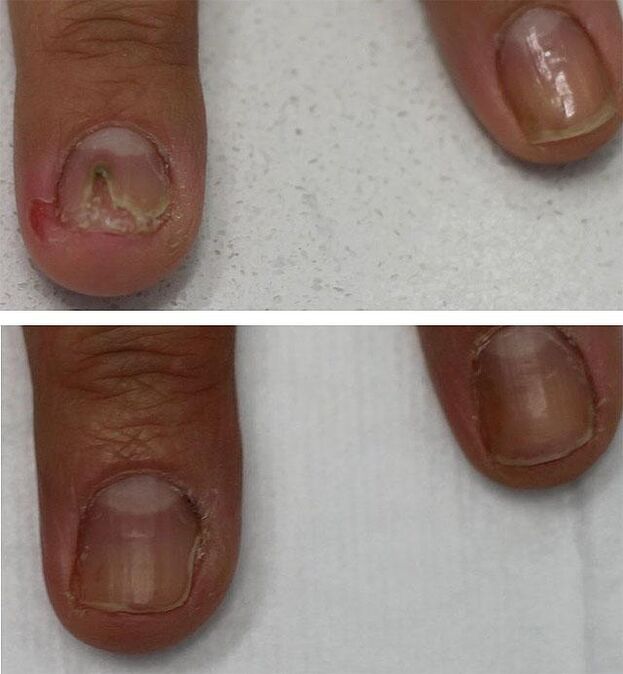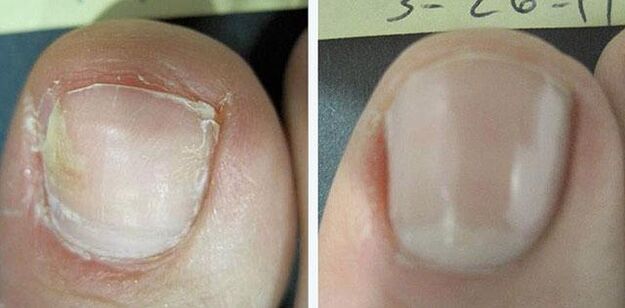
Onychomycosis is a widespread fungal nail disease (up to 18% of the population). It affects people of all ages, and an increase in the number of people affected has also been observed in the last decade among adolescents and children. Due to high contact and frequent recurrence, treating finger and toenail fungus is a complex and time-consuming process.
When does infection occur?
- In families with widespread use of footwear, household items (bathroom rugs) and body care products (washcloths, manicure sets);
- When visiting swimming pools, showers in gyms and companies, saunas and baths.
Agents causing the disease.
Effective treatment of nail fungus is possible only with the correct laboratory diagnosis of the pathogen. In almost 90% of cases, onychomycosis is caused by various types of dermatophytes. A specific species affects the corresponding parts of the body that are characteristic of it:
- fingernails and toenails, as well as any part of the skin;
- Nail plates on the feet and the skin of the III-IV interdigital spaces, the arch of the foot, the upper third of the sole, the lateral surfaces of the fingers.
In rarer cases, the disease is caused by other types of fungi (trichophytos, epidermophytos, much less often) similar to yeast. On very rare occasions, onychomycosis can be caused by molds that affect the nails in the area of the first toe, mainly in people over 50 years of age.
Contributing factors
Favorable conditions for the introduction and development of infection:
- Damage to the nail plate and the skin around it. This often happens as a result of wearing tight shoes, cosmetic procedures.
- Fractures of the fingers and bones of the foot or hand.
- Leg swelling with heart disease, obliterative atherosclerosis of the lower extremities, varicose veins, Raynaud's disease (spasms of the arteries of the upper extremities).
- Endocrine diseases (especially diabetes mellitus).
- Pregnancy (due to hormonal changes and decreased immunity).
- Decreased general immunity.
- Congenital abnormalities in the formation of the stratum corneum of the skin.
- Serious and long-lasting chronic diseases that reduce the body's defenses.
- Long-term treatment with corticosteroids and antibiotics, systemic diseases and other immune diseases.
The possibility of transmission of the infection in the body through blood and lymph has already been proven.
Diagnosis of onychomycosis
The diagnosis of a fungal infection is based on local and general clinical manifestations and laboratory investigation.

Clinical manifestations
The symptoms are very diverse and depend on the type and type of pathogen. Separately, toenails (80%) and hands may be affected; Less common is the simultaneous defeat of the nails of the lower and upper extremities.
Depending on the nature of the change in the nail plate, 4 forms of damage are distinguished:
- Normotrophic- characterized by a yellowing of the final edge of the nail plate. It becomes opaque and thickened due to the epidermal stratum corneum (subungual hyperkeratosis). The shape of the affected nails does not change for a long time.
- Hypertrophic, in which the nail becomes yellowish and thickened, the edges loosen. Transverse striae gradually appear. The nail plate turns dirty and dull gray. In some cases (usually in the first toes) it thickens, becomes long and curved like a bird's claw or beak (onychogryphosis).
- Atrophic- the nails are dull, grayish or yellow. They change their shape, collapse at the edge of the end, partially exposing the bed. The latter is covered with loose layers of the stratum corneum.
- Onycholysis- detachment of the nail plate from the bed. With this form of fungal infection, the normal color remains only in the root area. The rest of the nail thins, separates from the bed, loses its shine and becomes yellowish or grayish-dirty.
Combined forms are often seen. The clinical manifestations listed are not specific for specific types of fungal lesions. They can also be in diseases not associated with fungi.
Some common manifestations are also possible: an allergic rash on the body, increased fatigue and decreased appetite. They are explained by the ability of some types of dermatophytes to cause an allergic restructuring of the body and mold fungi, to release toxins, leading to chronic intoxication of the whole body.
Laboratory diagnostics
It consists of the collection of material (particles of layers of the epidermis, pieces of nails). The taken material is poured with a caustic alkali solution, left for 24 hours at a temperature of about 20 degrees, after which it is examined under a microscope. This technique allows the differential diagnosis between fungal and non-fungal lesions. In the presence of a fungus, filaments of various thicknesses and shapes, clusters of spores are visible under a microscope.
After that, the material is sown on a special nutrient medium for the growth of the pathogen, followed by identification of its type and determination of sensitivity to antifungal drugs.
Treatment characteristics
When choosing therapy methods, the shape, type and extent of the lesion, the growth rate of the nails, the general condition of the body and the side effects of the drugs used are taken into account, especially in the presence of diseases. concomitants. On the basis of these principles, the treatment of toenail fungus, as well as on the hands, consists of a local or complex effect.
Local impact principles
It is possible if:
- the infection has not affected all nails;
- the defeat of each of the infected nail plates is less than half its area;
- the process is located only in the final and lateral sections of the plate without involving the root;
- there are contraindications to the use of systemic drugs.
Local drug treatment
It consists of using a cream, solution or nail polish that contains substances that soften the nail plate. They also include drugs for the treatment of fungus in the nails of the feet (hands), which inhibit the growth and development of the infection:
You can pre-apply any preparation to soften the plaque and remove it layer by layer, as in the first case, and then 2 times a day apply broad-spectrum antifungal drugs in the form of creams or solutions. At the same time, it is necessary to rub them into the surrounding skin.

Medical Hardware Pedicure
Medical pedicure is used as an additional procedure (but not as a treatment! ) That shortens the treatment time. Its essence is to use a router with an accessory in the form of a metal or diamond cutter. This device greatly facilitates the painless removal of a previously softened nail to its bed. The use of the hardware method is recommended when more than 60% of the nail plate area is damaged, but it does not replace additional drug treatment with antifungal agents.
Surgery
In severe forms of onychomycosis with severe nail deformity, it is sometimes surgically removed under general anesthesia or conduction anesthesia with the additional use of antifungal drugs. The main disadvantage of the method is damage to the nail bed, as a result of which the newly grown plate lags behind and has an irregular shape.
Laser treatment
This method consists of heating the nail with laser radiation in a short pulse range to a temperature of 45-47 degrees, at which the dermatophytes die. The procedure is most effective in the initial stages of nail damage without deformation. Depending on the severity, it is necessary to perform 1 to 8 sessions with an interval of 7 to 60 days. In serious injuries, local and systemic treatment should be performed.

Systemic drug treatment
It is indicated for multiple nail injuries, root involvement in the process and in the absence of the effect of local exposure.
The most effective drugs for treating nail fungus are tablets. containing substances such as terbinafine, fluconazole and others. They are prescribed in courses for 3-4 months and remain in the body after the end of treatment for up to 9 months. The last two drugs, due to the toxic effect on the liver, are used much less frequently.
Systemic treatment is contraindicated in kidney and liver diseases. During pregnancy and lactation, only local treatment of 1-2 nails is possible, but it is better to refrain from this.
























